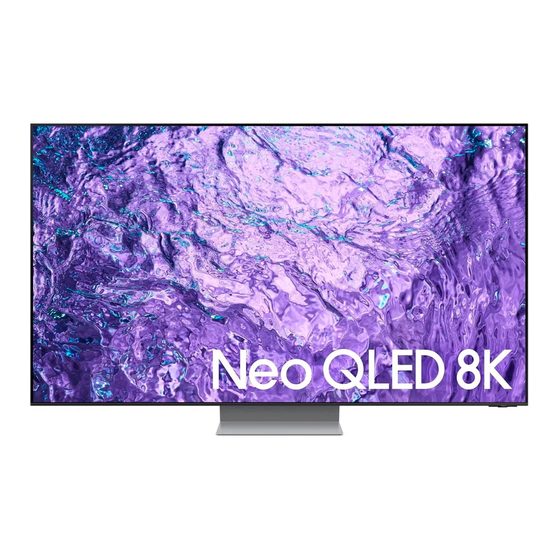- ページ 26
モニター Samsung 7 SeriesのPDF ユーザーマニュアルをオンラインで閲覧またはダウンロードできます。Samsung 7 Series 48 ページ。 Crystal uhd
Samsung 7 Series にも: クイック・セットアップ・マニュアル (4 ページ), クイック・スタート・マニュアル (2 ページ), ユーザーマニュアル (19 ページ), ユーザーマニュアル (50 ページ), ユーザーマニュアル (32 ページ), ユーザーマニュアル (20 ページ), ユーザーマニュアル (44 ページ), ユーザーマニュアル (35 ページ), ユーザーマニュアル (31 ページ), ユーザーマニュアル (48 ページ), ユーザーマニュアル (33 ページ), ユーザーマニュアル (36 ページ), ユーザーマニュアル (29 ページ), ユーザーマニュアル (20 ページ), ユーザーマニュアル (44 ページ), ユーザーマニュアル (34 ページ), ユーザーマニュアル (20 ページ), ユーザーマニュアル (24 ページ), ユーザーマニュアル (44 ページ), ユーザーマニュアル (50 ページ), ユーザーマニュアル (46 ページ), ユーザーマニュアル (44 ページ), ユーザーマニュアル (36 ページ), ユーザーマニュアル (40 ページ), ユーザーマニュアル (32 ページ), ユーザーマニュアル (24 ページ), ユーザーマニュアル (48 ページ), ユーザーマニュアル (20 ページ), ユーザーマニュアル (32 ページ), ユーザーマニュアル (44 ページ), ユーザーマニュアル (48 ページ), ユーザーマニュアル (17 ページ), ユーザーマニュアル (44 ページ), ユーザーマニュアル (48 ページ), ユーザーマニュアル (48 ページ), ユーザーマニュアル (24 ページ), ユーザーマニュアル (32 ページ), ユーザーマニュアル (32 ページ), ユーザーマニュアル (20 ページ), ユーザーマニュアル (40 ページ), ユーザーマニュアル (40 ページ), ユーザーマニュアル (40 ページ), ユーザーマニュアル (44 ページ), ユーザーマニュアル (24 ページ), ユーザーマニュアル (48 ページ), ユーザーマニュアル (24 ページ), ユーザーマニュアル (24 ページ), ユーザーマニュアル (19 ページ), ユーザーマニュアル (19 ページ), ユーザーマニュアル (48 ページ), ユーザーマニュアル (19 ページ), マニュアル (44 ページ), ユーザーマニュアル (19 ページ), ユーザーマニュアル (48 ページ), ユーザーマニュアル (24 ページ), ユーザーマニュアル (20 ページ), ユーザーマニュアル (17 ページ), マニュアル (36 ページ), ユーザーマニュアル (19 ページ), ユーザーマニュアル (44 ページ), ユーザーマニュアル (24 ページ), ユーザーマニュアル (44 ページ), ユーザーマニュアル (20 ページ), ユーザーマニュアル (19 ページ), ユーザーマニュアル (44 ページ), ユーザーマニュアル (20 ページ), ユーザーマニュアル (24 ページ), ユーザーマニュアル (32 ページ), ユーザーマニュアル (44 ページ), マニュアル (36 ページ), ユーザーマニュアル (44 ページ), ユーザーマニュアル (40 ページ), ユーザーマニュアル (44 ページ), ユーザーマニュアル (24 ページ), ユーザーマニュアル (2 ページ), マニュアル (44 ページ)

